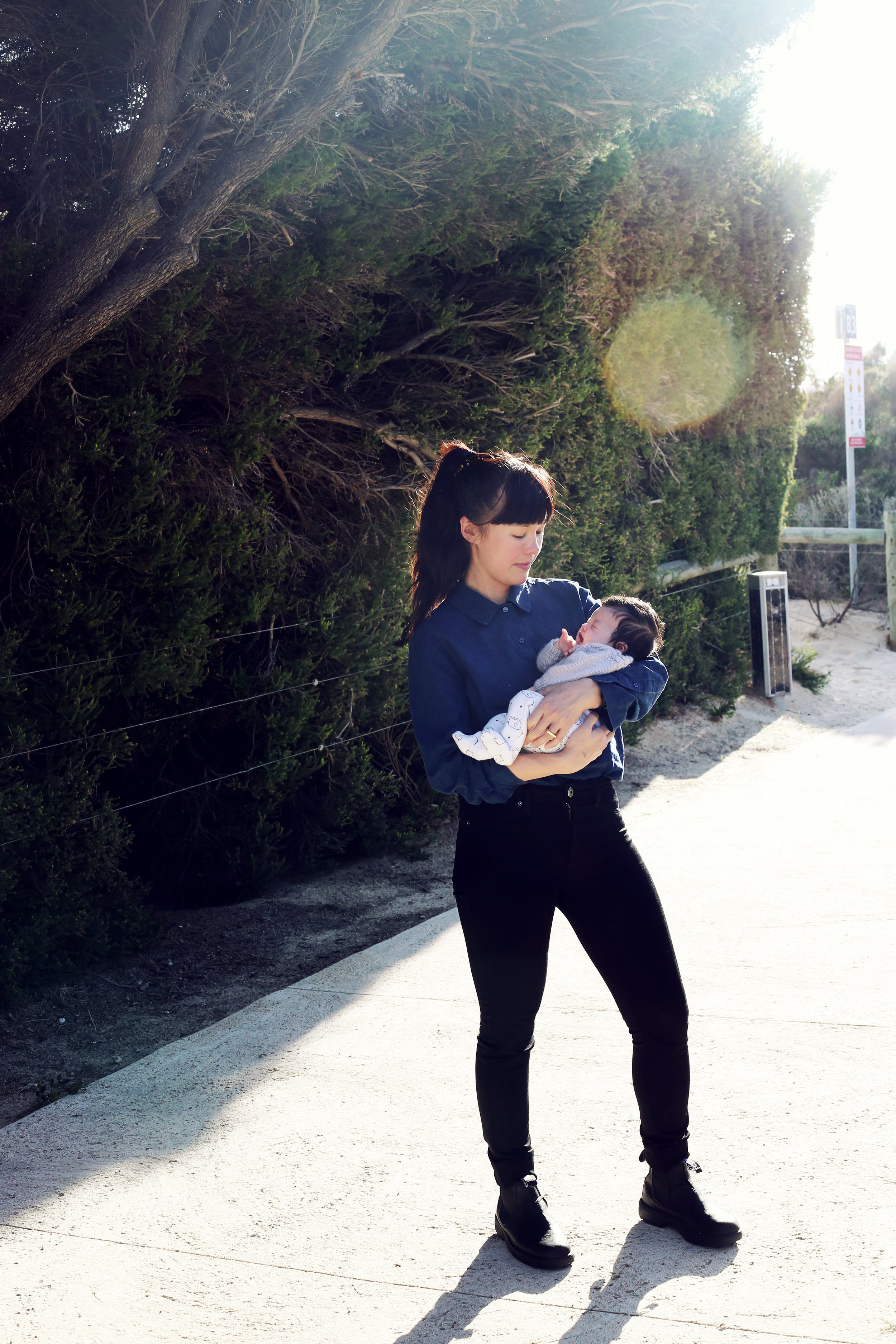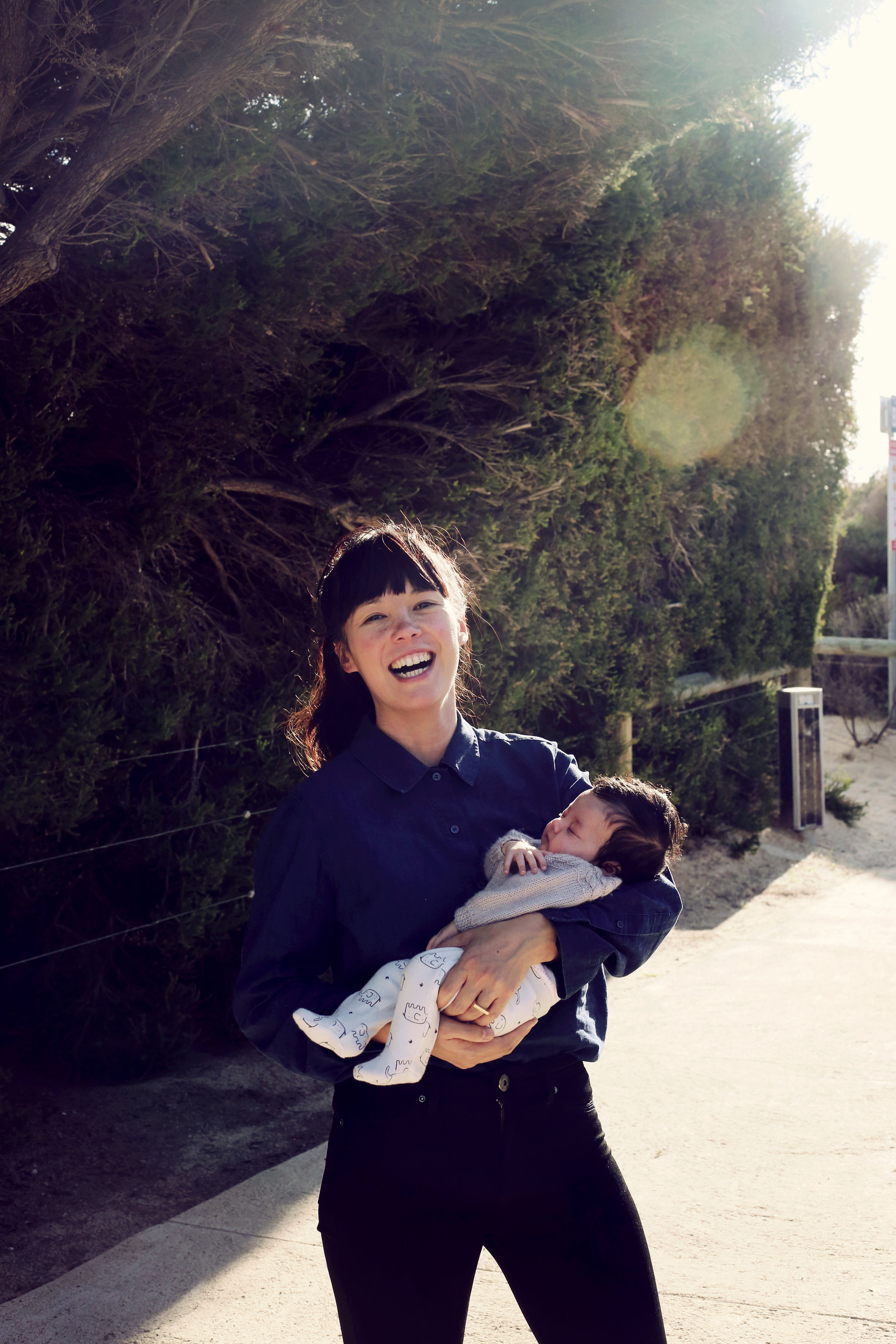A Conversation with Christina Chau
by Robert Wood
Christina Chau is an art historian and theorist with an interest in the contemporary.
She teaches at the University of Western Australia, and, is the author of Movement, Time, Technology and Art. Christina was a television presenter on the ABC for the show Art Bites.
I want to focus our conversation on art, on being mixed race, and on identity. In that way, I think that some of the most interesting cultural expressions of belonging, of home, of migration happens in the language of the visual arts. We all have instagram now, and, if our daily lives are anything to go by, there are all kinds of image-making throughout society. What do you make of image culture and contemporary art right now?
That’s a really interesting question because in one respect, it’s something that I think about professionally, and talk to my students about every day – here we speculate on ways of seeing, framing, and play with different visual languages. However, personally, I feel bombarded, guarded, and confused about image culture and contemporary art. Part of that is because technology is moving more quickly, and we’re confronted with a lot of visual stimulus more frequently on a daily basis, that it’s difficult to gain some critical distance, reflect, engage, discuss, and reassess. But also contemporary art is very elusive – it’s difficult to talk about an aesthetic, or a set of aesthetics that encapsulate contemporary art (and also visual culture in general), because that’s the thing that contemporary art evades in the first place. This elusiveness isn’t a bad thing as such, it just makes talking about it in regards to visual culture a little challenging.
Is the image where you feel at home? Or is it part of a wider intellectual and artistic practice that is simply one part of lifestyle?
I think that it has to be both. The production and consumption of images is a part of my daily existence, a part of my lifestyle intellectually and habitually. The images that I take privately with family and friends work in the same way that I talk about to my students. So in that sense it has to be both. I grew up in a household where image-taking was frequent and equally loathed. My dad loved his gadgets and would often be recording banal moments – perhaps it was his way of trying to connect and communicate with his kids, or maybe it was about status back then?
I quickly learned about performing for /playing to the camera, and the framing of different realities. I am endlessly fascinated with the banality of images, whether they are in a photo album that you can hold, or scrolling through digital images on your phone. And the banality and ontology of images are fascinating practices that contemporary artists are playing with. I guess, compared to the 80s, the key difference with visual culture today is the rapid reproducibility of images, which then brings new approaches to the seduction and performativity of image making (I’m thinking of Hito Steyerl’s ‘In Defense of the Poor Image’). Suffice to say that images are deeply personal and private and also simultaneously public, performative, and trite.
I grew up in a household where image-taking was frequent and equally loathed.
You just mentioned the 80s. Talk to us about your childhood. We grew up in a similar era, where multiculturalism was king but also where bringing chicken curry or nasi goreng to school wasn’t super common. I guess it was a moment before today’s ‘person of colour’ moment, but it had its own logic and there was a unique kind of sense about being multicultural that was different to being ethnic or diverse. That was good and bad, but what do you remember from growing up?
I grew up in a small town in the Great Southern region of Western Australia. My family moved there from Melbourne one month before I was born because my dad got a job as the region’s gynaecologist. My Mum is Irish-Australian and my Dad was from Hong Kong and moved to Australia when he was a teenager. Unlike the few other Asian families in the town, my siblings and I didn’t know very much about our family’s heritage, culture, or history other than the Cantonese dishes that my mum learned to cook for my dad. His generation migrated from Hong Kong to Australia and other places in the Commonwealth during the Cultural Revolution in fear that what had happened in in mainland China was an indicator of future life in Hong Kong. And so I think that he was keen on a fresh start and wanted to focus on the future, which meant parting with his culture. We never learned Cantonese, rarely met extended family, and only recently learned about the family’s lineage – suffice to say, there are many painful buried stories.
As a kid, I felt that my identity straddled a liminal space between being ‘Asian’ to everyone else, and also disconnected from extended family and signifiers of cultural heritage. Growing up with that context in the 80s and 90s in a country town meant that there were times that I too was on the outside, looking in towards Australia’s multiculturalism at the time with equally sincere and naïve eyes. As a kid, ways of looking at and understanding other cultures came in the form of chow meins at the local takeaway joint, novelty chopsticks, instant Chicken Tonight, being called ‘ching chong chau’, ‘yellow peril’ and ‘slope’ on the odd occasion, but also finding a generation of actors and comedians that were Asian-Australian and grew up similarly to me. My brother and I would watch Hung Le’s stand up on SBS and look for cues on how to manage Asian-Australian identity. As an adult, I’ve acquired a better vocabulary and understanding of the multiplicity of stories and identities within the banner of ‘Chinese-Australian’. That might be to do with age, but also maybe because that narrative around ‘multicultural Australia’ has matured, or at least morphed since the 90s.
Yeah, I think that is right in terms of how the narrative has changed. I think being mixed race is often about developing a sense of aesthetics that crosses borders, not only as the bridge that connects the two, but also as having foundations on different islands. This is about how we look at the world and how it looks back at us also. In that way, I like whiskey from Scotland where dad is from, but also like fish curry in Kerala where mum is from. My mum grew up in Singapore and I think about Nonya cuisine as a kind of hybrid with influences from everywhere. Can you talk about being a bridge and how art and its criticism can bring people together from different places?
This question reminds me of how my husband describes the way I dress as “Cantonese-Equestrian”: Where I’m often wearing a jumper or dress from the Granville street Plaza in HK, with my Rossi boots…
Come to think of it, the style indicates that I’m highly flammable, but also always keen for a bonfire down south. I tell myself that I’m not superstitious but then again, I tend to gather, wear, and hold onto those things that remind me of who I am and the places that I’ve been to… maybe like lucky charms, but perhaps more like hugs that you can wear and hold. While this might feel like bridging spatially or geographically to you, I feel a little different, perhaps that’s because I connect to my heritage a little differently. But when I think about art criticism, it’s through art that I’ve learned more about peoples identities, histories, and stories that link me to others temporally and geographically. Hong Kong is a great place for that hybridity and also bridging because it’s such an intense city that is simultaneously international and parochial. My interest in art, art criticism, and art in Hong Kong has made me look and think about Contemporary Art with new eyes, and more playful (or sceptical) of Western ways of seeing.
We never learned Cantonese, rarely met extended family, and only recently learned about the family’s lineage – suffice to say, there are many painful buried stories.
You have touched on this a little bit before, but how has racism played a role in your own life, and, what do you see it in the art world? There have been some really interesting articles on this recently, including Andy Butler’s ‘Safe White Spaces’. But I want to know how you read the situation.
Yeah that was a very interesting article. Butler’s article pinpoints some clear problems in the arts industry. It’s particularly frustrating when the arts that claims to be interested in diversity and inclusivity to the public, but can also work very conservatively behind the scenes. I recently read Michelle Fisher’s article ‘Parenting and Labor in the Art World: A Call to Arms’, which is more about the systematic problems with working in the arts and contemplating starting a family, but I think that the same problems can be applied to wider conversations.
Having said that, I think that it really depends on what area of the arts you’re looking at. I find that in Perth there are some more conservative institutions and groups, that function like an old guard in the arts, and there are some problematic token gestures towards diversity and representing the arts community in Perth. Going to events and openings to these places feel identical to Ross Coutler’s photographs.
But that’s a specific section of the arts in Perth. Overall, I think that there are some amazing artists who are talking about their identities through their work, and that there is a dialogue about difference, and diversity. Perth seems to perpetuate an image of being isolated and forgotten (which is an overcooked narrative), but also people here are resilient and making their own fun, and are genuinely interested in the histories of the region. There are many early and mid-career artists, artist run initiatives, galleries, and collectives in particular that are fuelling conversations about ancestry, history, migration, and marginalisation.
Building on from that, and a way to end the conversation, I am wondering if you could share with us some of the people that are doing really important things in art here and now. People who are mixing and matching cultures and media in painting or video or performance or anything else?
Nathan Beard, Abdul Raman Abdulla, Abdul Abdulla, Mei Swan Lim, Gian Manik (from Perth living in Melbourne) are each thinking about their own identity, history, and stories, but in their own way making space for others to express and engage with identity and difference.
Perth seems to perpetuate an image of being isolated and forgotten (which is an overcooked narrative), but also people here are resilient and making their own fun, and are genuinely interested in the histories of the region.
Find out more
Interview by Robert Wood
Photographs by Leah Jing






